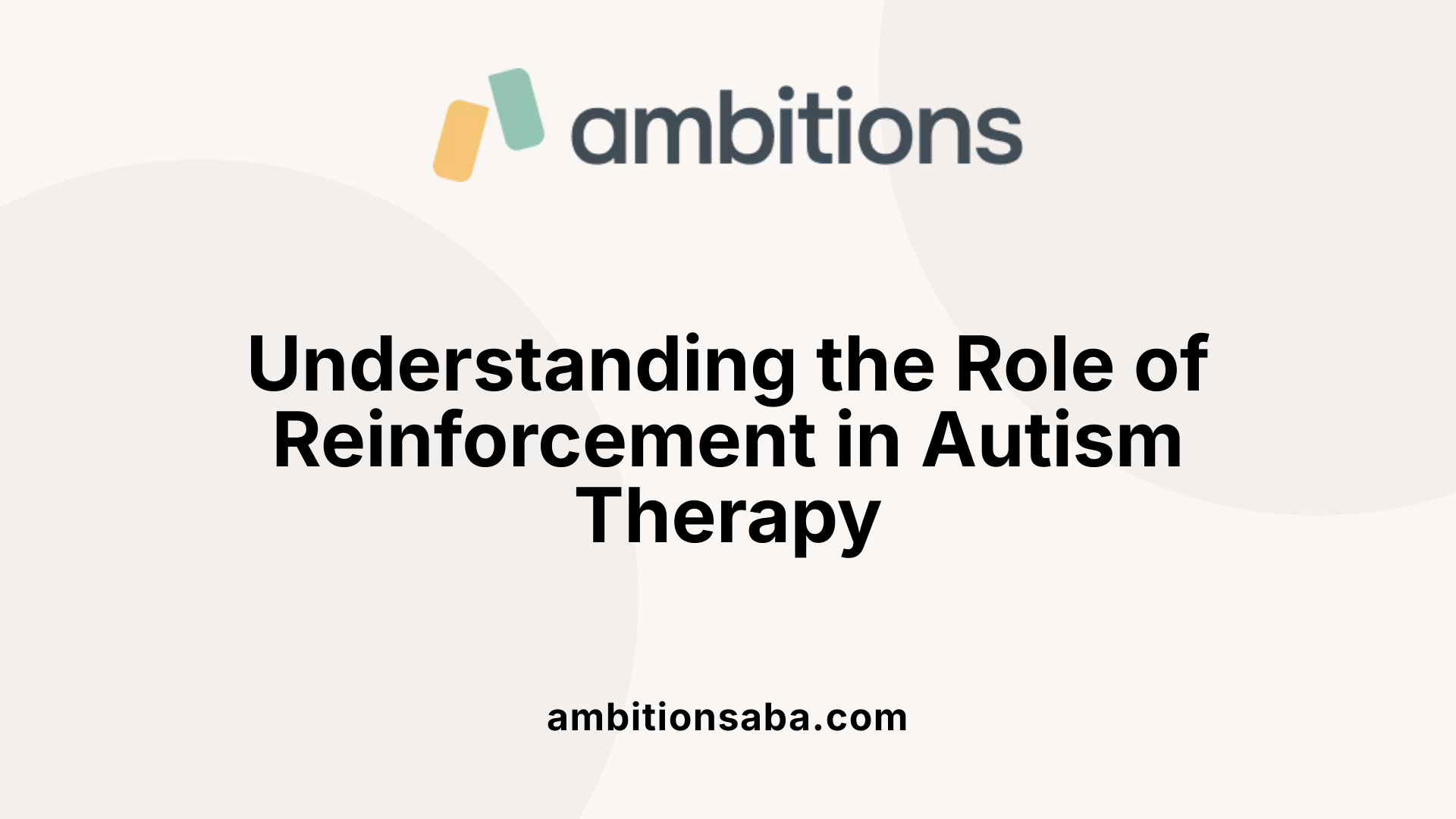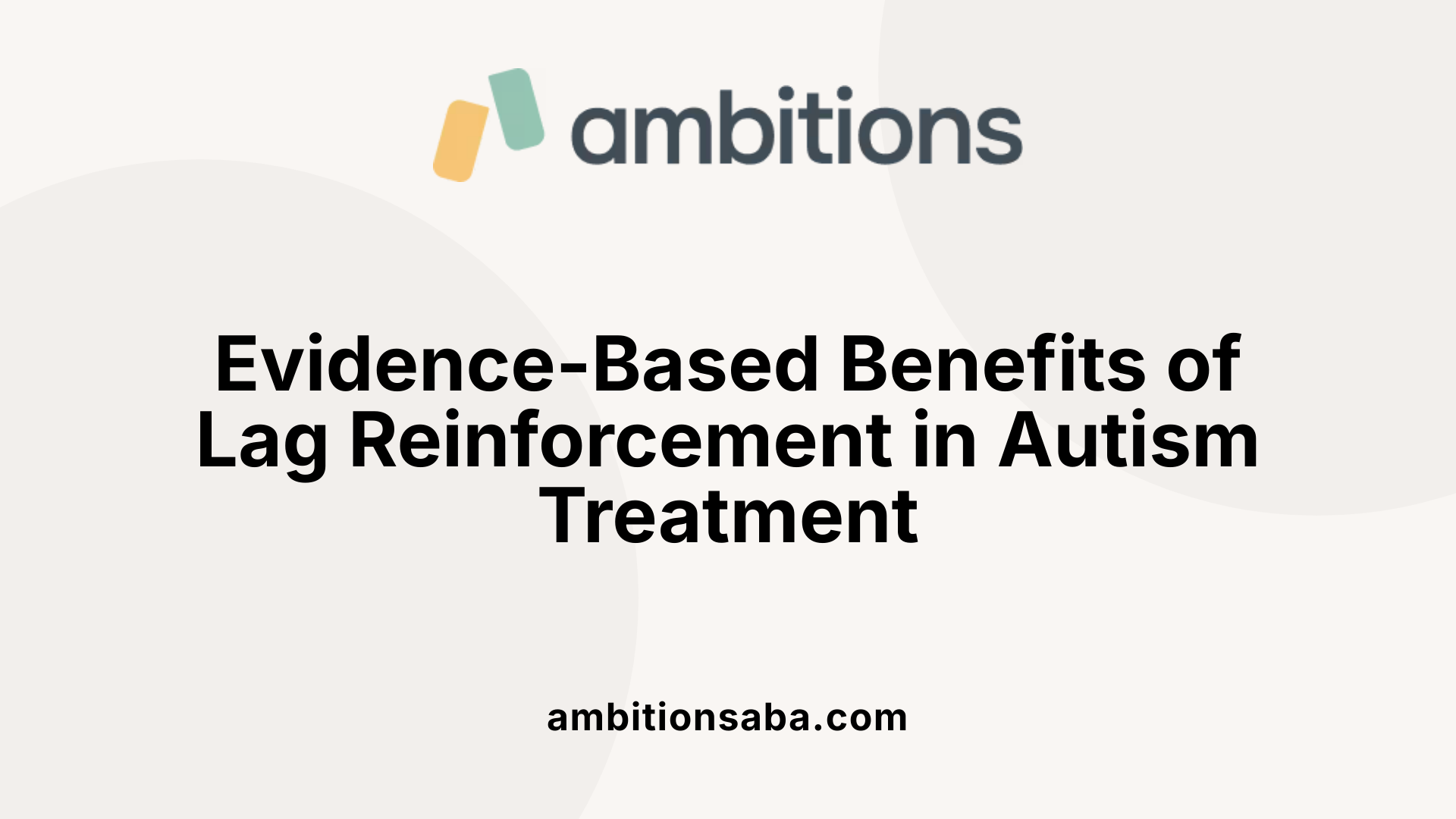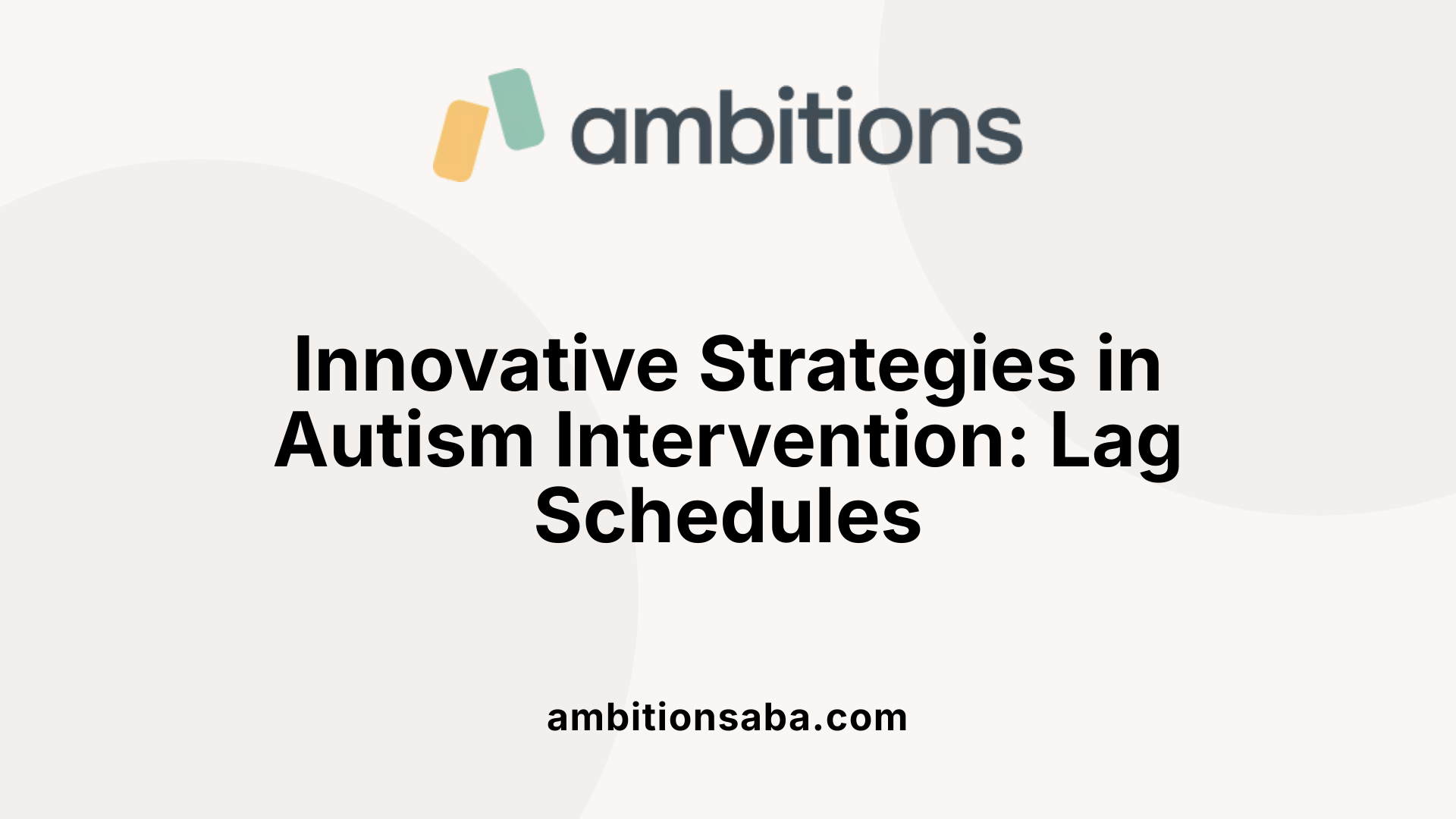Unlocking Communication Potentials in Autism Through ABA
Introduction to Lag Schedules and Autism Therapy
Applied Behavior Analysis (ABA) stands as a scientifically validated therapy focused on autism and behavioral analysis, designed to foster beneficial behaviors like communication and social skills, while reducing challenging behaviors. Within ABA, reinforcement schedules play a crucial role. This article explores a particular reinforcement technique—lag schedules—and their application in improving behavioral responses in individuals with autism spectrum disorder (ASD). Through recent studies and clinical interventions, lag schedules demonstrate promising results in increasing behavioral variability and enhancing communication, integral to effective autism therapy.
Foundations of Applied Behavior Analysis and Reinforcement Schedules

What is the therapy focused on autism and behavioral analysis?
Applied Behavior Analysis (ABA) is a scientifically validated therapy designed to improve behaviors in individuals with autism spectrum disorder (ASD). The core goal of ABA is to increase helpful behaviors such as effective communication, social skills, and self-care while decreasing harmful or limiting behaviors. ABA achieves these goals through reinforcement techniques that encourage desirable behavior patterns.
Role of reinforcement in ABA
Reinforcement plays a central role in ABA, where positive reinforcements are used to encourage and strengthen targeted behaviors. Therapists use reinforcement strategies to reward desired actions, which then increases the likelihood those behaviors will be repeated. Reinforcement can be delivered in many forms, such as praise, tokens, or access to preferred activities, depending on the individual’s preferences.
Types of reinforcement schedules including lag schedules
Reinforcement schedules dictate how and when reinforcements are given. Various schedules exist, such as fixed ratio, variable ratio, fixed interval, and variable interval. Among these, lag schedules stand out for their unique ability to increase behavioral variability. A lag schedule reinforces a response only if it differs from previous responses by a certain number — for example, a Lag 1 schedule reinforces a different response than the immediately preceding one, while a Lag 2 requires the response to differ from the last two.
How lag schedules function within behavioral therapy
Lag schedules encourage variability rather than repetitive or rote responding. This approach is especially beneficial for individuals with ASD who may engage in rigid or invariant behaviors. By reinforcing novel or varied responses, lag schedules promote flexibility and adaptability in communication and social interactions. When embedded within functional communication training (FCT), lag schedules help reduce challenging behaviors and enhance the persistence and generalization of appropriate communication behaviors.
This systematic way of delivering reinforcement helps build more durable behavior patterns and can also reduce relapse into challenging behavior during lapses in treatment or reinforcement. Overall, lag schedules are a vital tool in ABA that support more dynamic and functional behavior change in autism interventions.
Understanding Lag Schedules of Reinforcement
What Are Lag Schedules?
Lag schedules are a specialized type of reinforcement schedule used in Applied Behavior Analysis (ABA) to increase behavioral variability. Instead of reinforcing identical repeated behaviors, they reinforce responses that differ from recent behaviors. This encourages individuals, especially those with Autism Spectrum Disorder (ASD), to vary their responses rather than engage in repetitive or rote behaviors.
How Do Lag Schedules of Reinforcement Work?
A lag schedule introduces a delay between the behavior and its reinforcement. For example, under a Lag 1 schedule, the individual is reinforced only if their behavior differs from the immediately preceding response. Similarly, a Lag 2 schedule requires the response to vary from the previous two responses before reinforcement is given. This technique fosters flexibility and novelty in behavior by rewarding differences.
Mechanics of Lag 1 and Lag 2 Schedules
- Lag 1 Schedule: Reinforces a response only if it is different from the one just before it.
- Lag 2 Schedule: Reinforces a response if it differs from the last two responses.
These schedules create a structured delay or 'lag' that promotes increased response variability.
Purpose of Introducing Lag Between Behavior and Reinforcement
The 'lag' serves as a purposeful interruption that discourages repetitive behaviors and encourages exploration of new responses. By doing this, lag schedules aim to enhance the persistence, flexibility, and generalization of appropriate behaviors, which are often challenges among individuals with ASD.
Role in Increasing Behavioral Response Variability
Employing lag schedules within interventions like Functional Communication Training (FCT) helps increase the variety and spontaneity of communication responses. This reduces reliance on rote responding and supports functional learning. Studies demonstrate that lag schedules not only increase appropriate varied responses but also help maintain these changes over time, improving generalization and reducing relapse of challenging behaviors.
| Element | Description | Example Usage |
|---|---|---|
| Lag 1 Schedule | Reinforces a response different from the immediately preceding one | Encouraging varied verbal answers during therapy sessions |
| Lag 2 Schedule | Reinforces a response different from the previous two responses | Increasing novelty in communication for children with ASD |
| Lag | Introduced delay between behavior and reinforcement | Helps prevent repetitive behavior and promotes flexibility |
| Outcome | Increased response variability and persistence | Functional communication improvement and reduced challenging behaviors |
Clinical Studies Applying Lag Schedules in Autism Therapy

How are lag schedules used within Functional Communication Training (FCT)?
Lag schedules, such as Lag 1 and Lag 2, are reinforcement strategies applied within Functional Communication Training to increase variability in communication responses among individuals with autism spectrum disorder (ASD). Rather than reinforcing repeated or rote responses, lag schedules reward a communication response only if it differs from one or more immediately preceding responses. This technique encourages novel manding (requesting) and reduces repetitive behaviors.
What are some study examples involving Lag 1 and Lag 2 schedules?
One study used a Lag 2 schedule with an 11-year-old girl, Belle, diagnosed with ASD. She was presented with three social questions in random order during sessions, resulting in increased appropriate verbal variability. Another investigation involved two boys with autism and challenging behaviors; during FCT with Lag 1 schedules, both showed increased varied mand responses and maintained low challenging behaviors such as self-injury and aggression.
How do lag schedules impact communication and challenging behaviors?
Lag schedules effectively increase the flexibility and novelty of communication responses while concurrently reducing challenging behaviors. In both Lag 1 and Lag 2 phases, participants demonstrated mean correctness in responding near 100%, acquired new prompted and spontaneous responses, and maintained low levels of problem behavior. For Belle, 11 novel prompted and 13 spontaneous responses reflected functional learning.
How do these skills generalize and maintain over time?
Using multiple social questions and different interviewers helped reduce stimulus control limitations, enabling participants to generalize communication skills across contexts. Maintenance probes conducted four weeks post-intervention revealed sustained response variability, indicating the durability of treatment gains.
What evidence supports the effectiveness of lag schedules in autism interventions?
Studies consistently show that embedding lag schedules in FCT increases behavioral response variability while maintaining low challenging behaviors. For example, Belle's case demonstrated increased appropriate verbal responses and spontaneous novel communication, with improvements lasting beyond treatment. Moreover, adopting lag schedules can prevent relapse by reinforcing varied behaviors, making this approach a valuable adjunct in autism therapy.
| Aspect | Lag 1 Schedule | Lag 2 Schedule | Impact on Behavior |
|---|---|---|---|
| Reinforcement criteria | Response differs from immediately before | Response differs from prior two responses | Encourages varied manding and novel responses |
| Target population | Children with ASD and challenging behaviors | Children with ASD | Increases flexible communication, reduces challenging behaviors |
| Generalization approach | Multiple questions and interviewers | Random question order and probes | Improved transfer of communication skills |
| Maintenance | Sustained variability post-treatment | Long-term maintenance confirmed | Durable behavioral improvements |
Benefits of Increasing Behavioral Variability in Autism Interventions

Why is increasing behavioral variability important in therapy for individuals with autism?
Many individuals with autism exhibit invariant or rote behaviors that limit their functional communication and adaptive responses. Behavioral variability is essential because it expands the range of appropriate responses, encouraging flexibility rather than repetition. Lag reinforcement schedules play a fundamental role in this process by reinforcing responses that differ from previous ones, promoting novel behaviors.
Challenges addressed by lag schedules such as rote responding and relapse
Lag schedules effectively combat issues like rote responding, where individuals repeat the same behavior without variation. By introducing a requirement that reinforced responses must differ from the last, lag schedules increase the variety of communication attempts. Additionally, these schedules help prevent relapse or resurgence of challenging behaviors, especially during treatment lapses or extinction periods, by maintaining engagement through varied communication.
Advantages of promoting novel responding
Promoting novel responding enhances a child's ability to adapt to new situations and social contexts. For example, in studies with participants diagnosed with autism, lag schedules led to the acquisition of spontaneous and prompted novel responses, highlighting functional learning. The approach also supports generalization of skills across different settings and interviewers, ensuring that improvements are not limited to controlled environments.
Effect on persistence and flexibility of communication
Lag schedules increase not only variability but also the persistence of appropriate behaviors. Introducing time delays (lags) in reinforcement encourages individuals to continue engaging in varied communication. This persistence is critical for developing long-term, flexible communication skills that extend beyond therapy sessions.
Role in preventing resurgence of challenging behaviors
By reinforcing varied and appropriate communication, lag schedules mitigate the likelihood of challenging behaviors reemerging during breaks in treatment or changes in reinforcement conditions. This preventive aspect ensures safer and more effective therapy outcomes for individuals with autism.
| Aspect | Impact of Lag Schedules | Explanation |
|---|---|---|
| Behavioral Rote Responding | Decreases by requiring different responses | Avoids repetitive communication patterns |
| Novel Responding | Increases acquisition of new communication forms | Encourages functional learning and spontaneity |
| Communication Persistence | Enhanced by delayed reinforcement | Supports longer engagement and practice |
| Generalization & Flexibility | Improved through multiple social contexts | Reduces stimulus control and broadens skill application |
| Reduction in Challenging Behaviors | Maintained at low levels during treatment | Prevents relapse and promotes treatment stability |
Practical Implementation and Generalization Strategies

How are lag schedules implemented to maximize generalization and effectiveness?
Lag schedules are thoughtfully integrated into Functional Communication Training (FCT) by presenting multiple social questions in a random sequence. Using different interviewers during these sessions minimizes the risk of stimulus control, which means the learner doesn't just respond correctly to one specific situation but generalizes the behavior across various people and contexts.
Applying lag schedules with multiple social questions and interviewers
By rotating social questions and involving several interviewers, the training sessions closely mimic real-life interactions. This variety challenges individuals to respond appropriately in diverse situations, fostering greater flexibility and variability in communication.
Use of prompts and rules alongside lag schedules
In addition to the lag reinforcement itself, prompts help guide the learner towards correct responses. Sometimes, incomplete or complete rules about when reinforcement will be given accompany the schedule to further encourage novel responding. These techniques work together to increase the quantity and quality of appropriate communication behaviors.
Assessments for functional communication and social validity
To confirm whether the approach is effective and well received, researchers conduct detailed assessments. Functional communication is evaluated both during baseline conditions and in generalization probes, while social validity—how acceptable and practical the intervention is—is assessed by independent masked raters and the learners' caregivers.
Maintenance of treatment gains
Crucially, the benefits of lag schedule interventions are not fleeting. Follow-up maintenance probes, conducted weeks after the initial training, consistently show sustained increases in behavioral variability and improved communication skills. This long-term persistence underscores the practical value of these strategies in supporting individuals with autism spectrum disorder.
| Implementation Aspect | Description | Purpose |
|---|---|---|
| Multiple social questions | Questions asked in random order | Prevent stimulus-specific responding |
| Multiple interviewers | Different adults conducting sessions | Enhance generalization across social partners |
| Prompts and partial reinforcement rules | Support and clarify when reinforcement is provided | Increase novel responding |
| Functional and social validity assessments | Use of baseline, generalization probes, and caregiver ratings | Confirm effectiveness and acceptability |
| Follow-up maintenance probes | Testing weeks post-intervention | Ensure long-term maintenance of behavioral gains |
Future Directions and Clinical Implications

What are the clinical implications and future research directions for lag schedules in autism therapy?
Lag schedules of reinforcement present a promising approach in autism therapy by enhancing functional communication and reducing challenging behaviors through increased response variability. Their use within Functional Communication Training (FCT) has proven effective not only in promoting appropriate communication but also in maintaining low levels of problem behaviors, even during treatment lapses or extinction phases.
Clinically, embedding lag schedules as an adjunct within broader Applied Behavior Analysis (ABA) programs could prevent or mitigate relapse in challenging behaviors. This strategy enhances communication flexibility, encouraging persistence of varied and novel responses, which is crucial for durable treatment gains. The strong maintenance of response variability post-intervention further supports their utility in long-term behavioral management.
Future research should expand exploration of lag schedules across a wider range of developmental disabilities beyond autism, such as Down syndrome, to assess generalizability and effectiveness. Investigations into optimal lag intervals (e.g., Lag 1 versus Lag 2), as well as the integration of complete or incomplete reinforcement instructions, could refine intervention strategies and maximize novel responding.
For clinicians and Board Certified Behavior Analysts, incorporating lag schedules can enrich individualized treatment plans by fostering greater response variability and functional communication. This technique holds considerable potential for improving intervention acceptability and social validity, thereby supporting better outcomes for children with autism and related disabilities.
Summary and Outlook on Lag Schedules in Autism Therapy
Lag schedules of reinforcement represent a strategic advancement in autism therapy, enhancing communication flexibility and reducing problematic behaviors through increased behavioral variability. Supported by research involving Functional Communication Training and multiple clinical examples, lag schedules effectively promote novel responding and maintain gains over time. Their role addresses critical challenges such as rote responding and relapse, underscoring their value in contemporary Applied Behavior Analysis practices. As research expands and clinical adoption grows, lag schedules may become integral in individualized, effective behavioral interventions for individuals with autism spectrum disorder.
References
- Using a Lag Schedule of Reinforcement to Increase ...
- Effects of Lag Schedules of Reinforcement on Variable ...
- What is Lag Schedule in ABA?
- An Evaluation of Lag Schedules of Reinforcement During ...
- "An Additive Analysis of Lag Schedules of Reinforcement and ...
- Applied Behavior Analysis (ABA)
- The Controversy Around ABA
- Applied Behavior Analysis (ABA)

